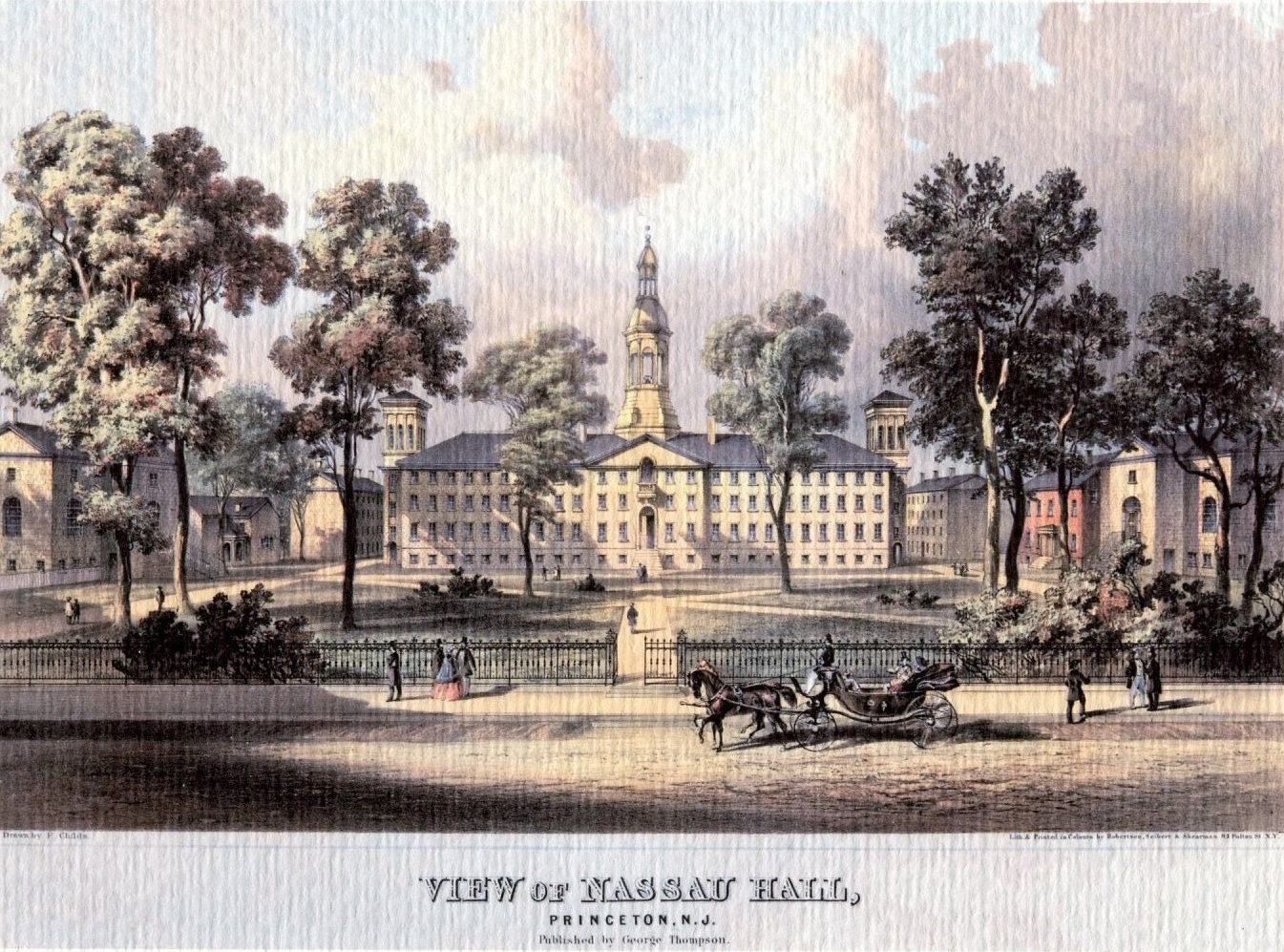-
When the Great Blizzard of 1888 Hit Princeton
One of the worst storms ever to hit the United States is typically known as “Great Blizzard of 1888,” but you may find it referred to as the “Great White Hurricane.” In it, Princeton students played a historic role in rescuing passengers aboard a train stuck in a snowbank, people were trapped inside for a…
-
Foodways for Princeton Students, Part II: Diversified Menus, 1855-2010s
This is the second post in a two-part series examining student foodways at Princeton. As mentioned in the conclusion of last week’s post in this series, the campus refectory was no longer an option after the Nassau Hall fire of 1855. This meant that eating clubs became entrenched in Princeton’s traditions. There were many transient…
-
Foodways for Princeton Students, Part I: The Refectory, 1760s-1855

This post is the first in a two-part series examining daily foodways at Princeton. Today, most Princetonians are likely to take it for granted that they can have a bagel with cream cheese and lox in the morning, pick up Chinese takeout for lunch, and relax over a dinner of spaghetti, but all of these…
-
The Horses of Princeton
When we say someone or something is a “workhorse” these days, it signifies working hard for a long time, but we rarely mean an animal. For most of Princeton’s past, however, this term would have referred to literal horses. Horses were a vital part of daily life well into the 20th century.
-
George Morgan White Eyes, Racial Theory at Princeton, and Student Financial Aid in the Eighteenth Century
By April C. Armstrong *14 In 1779, a group of Delaware set up camp on Prospect Farm, owned by George Morgan, along a dirt walkway that separated them from the campus of the College of New Jersey, as Princeton University was named until 1896. They brought a boy with them who was about eight or…
-
Marriage and Undergraduate Life at Princeton University in the 1970s
By Iliyah Coles ’22 Married undergraduates have been at Princeton for decades, even though they might appear to be relatively scarce at the University now. In fact, students who got married before attending college weren’t even allowed to be admitted until around 1970, most likely in part due to the difficulty in finding adequate housing…
-
Dear Mr. Mudd: War, Epidemics, and Suspended Classes at Princeton
Q. Dear Mr. Mudd, Has Princeton University ever had to close the campus before? Or have a lot of students been displaced and had to leave and/or study at home for some other reason in the past? A. In 2020, Princeton University suspended residential instruction after Spring Break due to the COVID-19 pandemic. It was…
-
Debating Race at Princeton in the 1940s, Part II: Roundtable News and the Liberal Union

This is the second post in a two-part series examining Princeton University’s debates over admitting African Americans in the 1940s. These debates began in earnest due to the dedication of one undergraduate in the Class of 1943, Francis Lyons “Frank” Broderick, whose efforts were the focus of the first post in this series. Here, I…
-
Debating Race at Princeton in the 1940s, Part I: Francis L. Broderick ’43
This is the first post in a two-part series examining Princeton University’s debates over admitting African Americans in the 1940s, which began in earnest partly due to the dedication of one undergraduate in the Class of 1943, Francis Lyons “Frank” Broderick. By April C. Armstrong *14 and Dan Linke At first glance, Francis Lyons “Frank”…
-
Faculty Wives and the Push for Coeducation at Princeton University
Coeducation brought female students to Princeton, but it didn’t bring the first women. There have always been women connected with the institution. Nonetheless, coeducation did change the lives of the women who were already here. Esther Edwards Burr, Sarah Pierpont Edwards, and Isabella McCosh, wives of three Princeton presidents from earlier centuries, have all received…
This blog includes text and images drawn from historical sources that may contain material that is offensive or harmful. We strive to accurately represent the past while being sensitive to the needs and concerns of our audience. If you have any feedback to share on this topic, please either comment on a relevant post, or use our Ask Us form to contact us.
